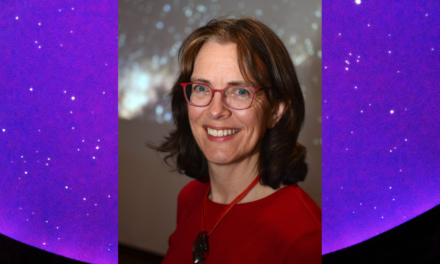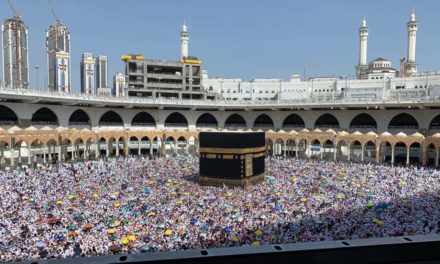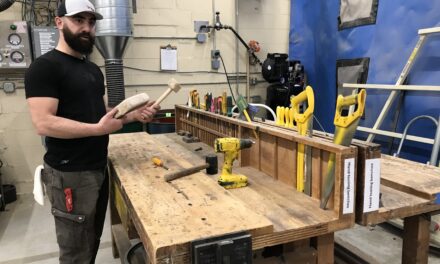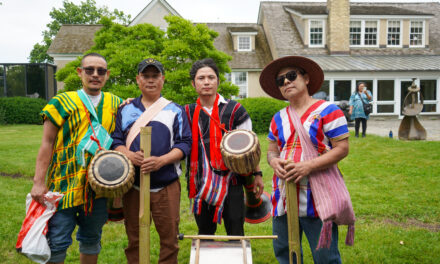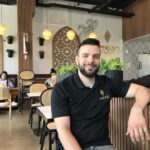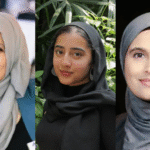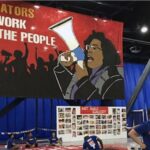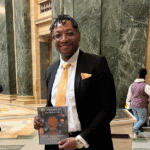On “The Great Muslim American Road Trip,” Mona Haydar and Sebastian Robins take a vacation along a legendary pathway through the U.S., Route 66. They are married millennials and evidently much in love, but they aren’t an ordinary married couple, and their vacation has an unusual agenda. Haydar is a rap star whose videos provocatively feature herself and Muslim women in hajibs, Robins is a convert to Islam, and they are off in search not only for the usual tourist attractions (they drive past the world’s largest ketchup bottle) but the story of Muslims in America.
The ambitious production is often composed in the snappy, jump-editing style of a contemporary music video but slows when exploring Muslim American history and the Muslim contributions to contemporary society. The travelog’s route was well chosen. Route 66 was the way to motor west before the interstate highways were born and was celebrated in song, movies and literature as a landmark for American mobility in the 20th century. On their journey, Route 66 carries Haydar and Robins through Muslim communities and interviews with scholars on the faith’s usually overlooked role in American life.
As Haydar puts it, they are “taking back the narrative.”
Debuting on Tuesday, July 5, episode one, “Life is a Highway, Chicago to Joplin, Missouri,” begins in the Windy City. The chatty pop culture tone is set when Haydar is astonished by her husband’s assertion that Gotham City represents New York in the Batman saga, not Chicago. She quickly consults Wikipedia on her cellphone and confirms that he is correct. The “Road Trip” gets down to more serious business when Haydar meets Maaria Mozaffer, the civil liberties and Muslim activist behind Illinois’ annual Muhammad Ali holiday, and Maryum Ali, who learns that the date commemorating her famous father is January 17.
It’s a clever way to open the “Road Trip,” given Muhammad Ali’s status as the only Muslim most Americans knew of in the 1960s. Archival film clips reveal his sharp wit and refusal to back down. Ali notoriously insisted on being called by his Muslim name, not his birth name of Cassius Clay, and refused to fight in the Vietnam War, despite the threat of prison and banishment from the sport of boxing.
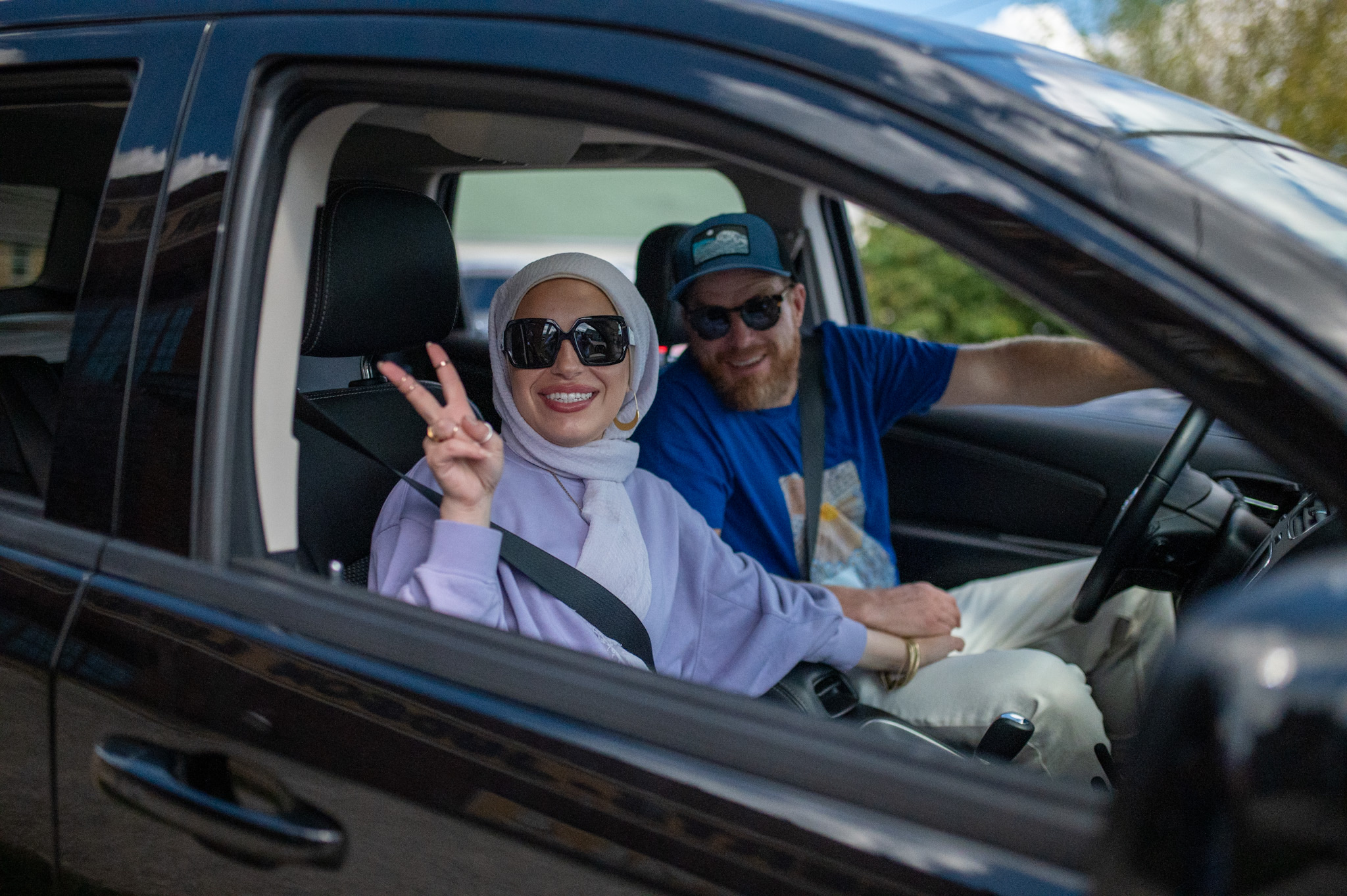
His daughter explains that for Ali, “religion was not something that should be private. It was a way of life … he wanted to stand up for his faith.” And despite his ability to bring down opponents in the ring with his fists, he was an empathetic man guided by faith. Haydar recalls the importance of Ali to Muslims across the world, repeating her mother’s story. In Damascus, 1967, the entire neighborhood crowded into their family home to watch Ali fight on TV.
Leaving Chicago, they travel through the Illinois flatland to Springfield where they visit a mosque for Friday prayers. The scene shows how the 1,500-year tradition has taken root in the Midwest soil and testifies to the diversity of Muslim Americans, mirroring the diversity of America. Haydar and Robins find a community of immigrants from many nations as well as native-born worshippers. Attending the Springfield mosque is a college professor, a U.S. Army veteran of the Iraq war and a U.S. Navy veteran of Afghanistan. He recalls being targeted by the Taliban for being “an educated Muslim.”
The conversation in the mosque’s fellowship hall after worship turned to the relationship between Islam and Christianity and how the common sources of the two religions should serve as a bridge of understanding. Most Christians are surprised to learn of the central role of Jesus, his miracles and prophecies—and his virgin mother Mary—in the Qur’an.
As the journey continues, Haydar and Robins meet with an African American studies professor to talk about the first Muslims to arrive in America. They were enslaved persons taken from Islamic societies in West and Central Africa and not permitted to practice their religion or pass down their heritage. In the mid-20th century, the rise of various Black Muslim groups is described by the professor as “an articulation of the prayers of their ancestors” as well as an affirmation of Black identity.
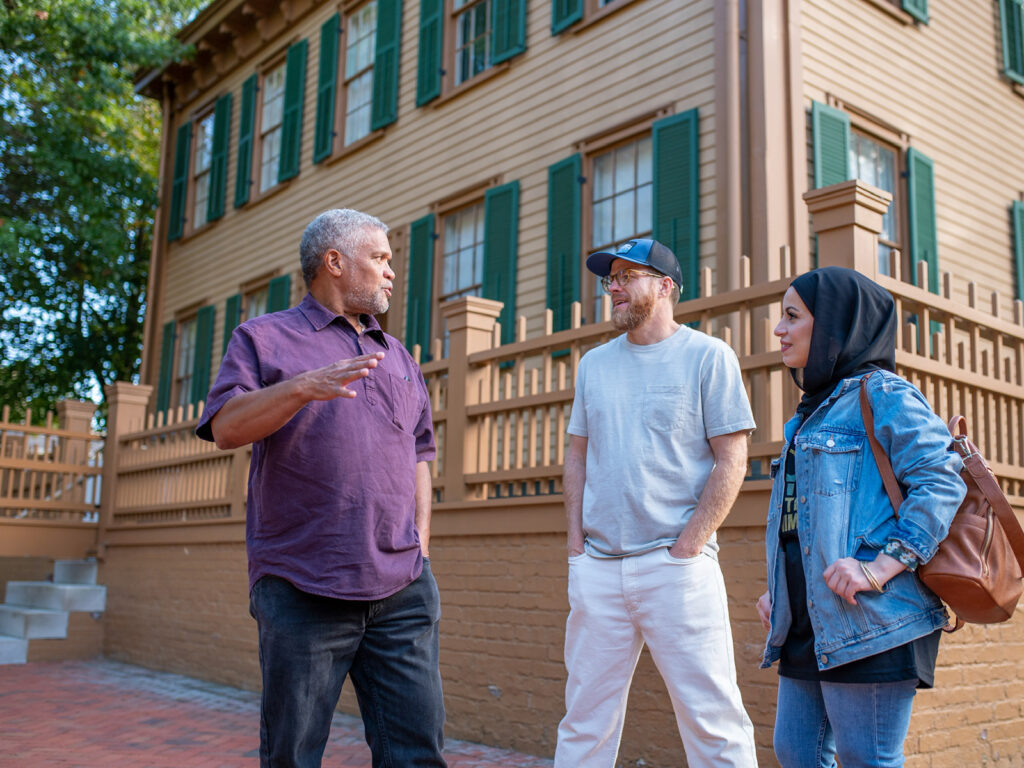
Arriving in St. Louis, Haydar and Robins speak with a curator from the Missouri History Museum on the 150-year history of Muslims in that state, beginning with an influx of immigrants from the Near East into the region after the Civil War. Although most were Arabs of Eastern Orthodox or Eastern Rite Catholic faiths, Muslims were among the newly arrived. They came to the U.S. for the same reasons as Italians, Jews and many others during the great surge of immigration in the late 19th and early 20th centuries. In some cases, they fled persecution, but often they sought economic opportunities and the chance for their children to escape poverty at a time when the U.S. economy was labor intensive and in need of millions of helping hands.
The curator repeated the legend that a Syrian invented the all-American ice cream at the 1904 World Fair in St. Louis but adds some less remembered facts. The fair included a one-to-one scale reproduction of Jerusalem’s Old City, including the Dome of the Rock as well as Christian and Jewish holy places, and boasted a Moroccan exhibition. Muslims were present at the fair, including several hundred Filipino Muslims (called Moros) brought in as workers. The Moros were classed as “semi-civilized,” occupying an intermediate position in the hierarchy of that time between cultures deemed as civilized and savage.
Haydar and Robins also discuss the Immigration Act of 1924, which virtually ended the flow of Muslims to the U.S. until its repeal in 1965. The legislation was deliberately racist, imposing harsh limits on “non-Nordic” immigration from Eastern and Southern Europe as well as Africa and Asia. And yet, as shown in still photographs, Muslims built mosques during the 1920s in places as far flung as Iowa and Brooklyn.

Before leaving St. Louis, Haydar and Robins dined at a Bosnian restaurant where they encountered a recent story of Muslim immigration. The restaurant was built in a renovated building by an early arriver from the former Yugoslavia. His family served as “first responders” when hundreds of Bosnians arrived in the city to escape the bloodshed of the Yugoslavian war of the 1990s, greeting them at the airport and finding work for them.
After St. Louis, the couple push on to Joplin, Missouri, where they join the city’s two dozen Muslim families at an outdoor picnic. Most of the men and some of the women are in health care, a prominent field for Muslim Americans since the 1970s. One of the physician’s quotes the Islamic saying, “To save one life is to save humanity,” linking his professional mission to his religious tradition.
Weaving their personal stories together with those of the people they encounter and the historical lessons they learn, Haydar and Robins become engaging guides to an American story that hasn’t been well told to the public.
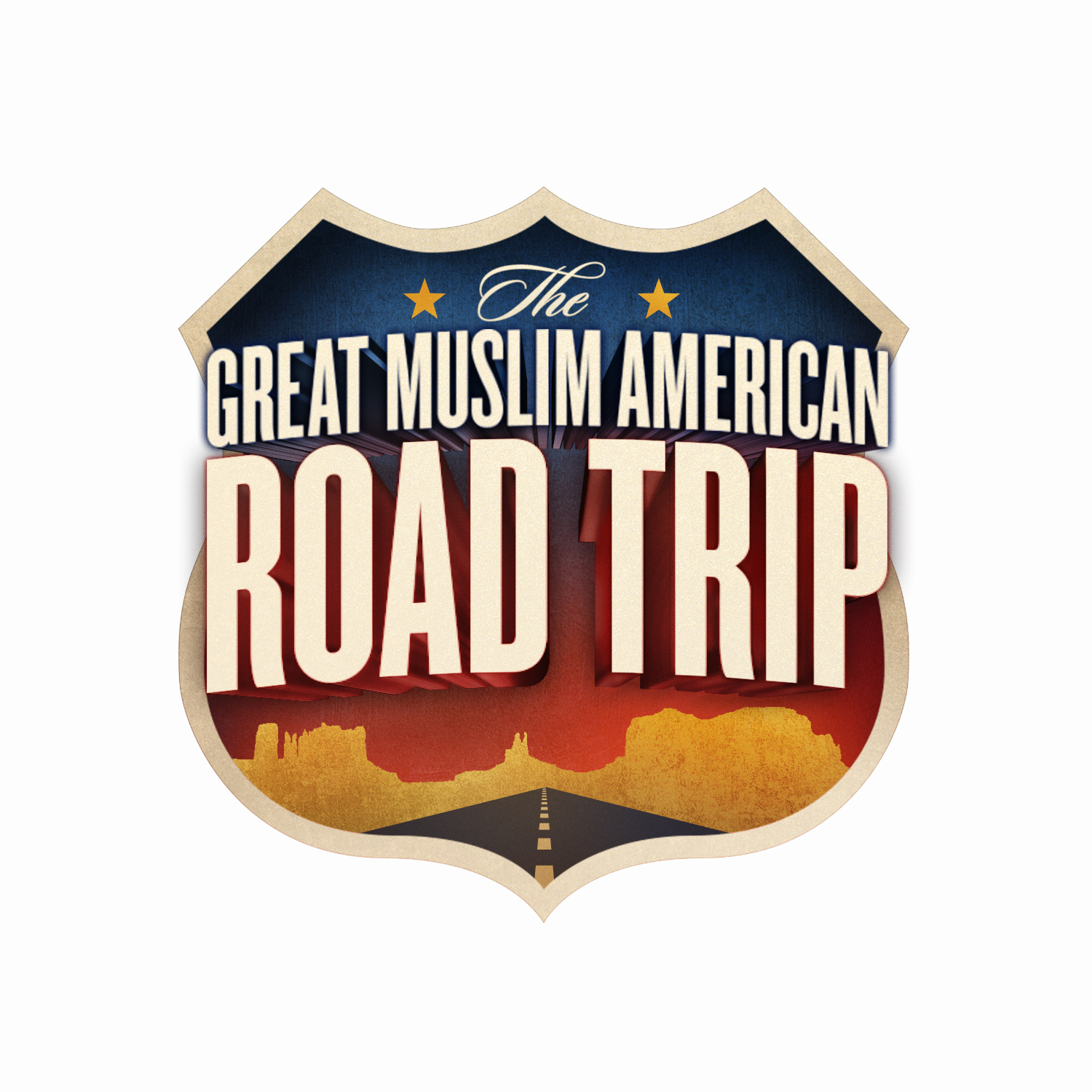
Their journey continues with episode two,
- “A Bridge Over Troubled Waters: Tulsa to Albuquerque, New Mexico”
9 p.m. July 12 on Milwaukee PBS Channel 10
and episode three, - “Back on the Road Again: Arizona, Nevada, California”
9 p.m., July 19 on Channel 10

